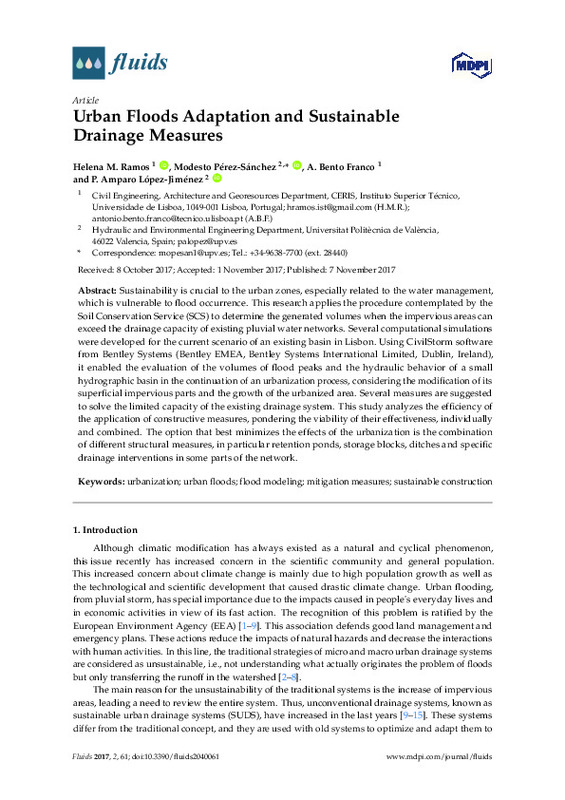Neal, J., Villanueva, I., Wright, N., Willis, T., Fewtrell, T., & Bates, P. (2011). How much physical complexity is needed to model flood inundation? Hydrological Processes, 26(15), 2264-2282. doi:10.1002/hyp.8339
Miller, J. D., & Hutchins, M. (2017). The impacts of urbanisation and climate change on urban flooding and urban water quality: A review of the evidence concerning the United Kingdom. Journal of Hydrology: Regional Studies, 12, 345-362. doi:10.1016/j.ejrh.2017.06.006
Costabile, P., Costanzo, C., & Macchione, F. (2017). Performances and limitations of the diffusive approximation of the 2-d shallow water equations for flood simulation in urban and rural areas. Applied Numerical Mathematics, 116, 141-156. doi:10.1016/j.apnum.2016.07.003
[+]
Neal, J., Villanueva, I., Wright, N., Willis, T., Fewtrell, T., & Bates, P. (2011). How much physical complexity is needed to model flood inundation? Hydrological Processes, 26(15), 2264-2282. doi:10.1002/hyp.8339
Miller, J. D., & Hutchins, M. (2017). The impacts of urbanisation and climate change on urban flooding and urban water quality: A review of the evidence concerning the United Kingdom. Journal of Hydrology: Regional Studies, 12, 345-362. doi:10.1016/j.ejrh.2017.06.006
Costabile, P., Costanzo, C., & Macchione, F. (2017). Performances and limitations of the diffusive approximation of the 2-d shallow water equations for flood simulation in urban and rural areas. Applied Numerical Mathematics, 116, 141-156. doi:10.1016/j.apnum.2016.07.003
Ashley, R. M., Balmforth, D. J., Saul, A. J., & Blanskby, J. D. (2005). Flooding in the future – predicting climate change, risks and responses in urban areas. Water Science and Technology, 52(5), 265-273. doi:10.2166/wst.2005.0142
Fowler, H. J., & Wilby, R. L. (2010). Detecting changes in seasonal precipitation extremes using regional climate model projections: Implications for managing fluvial flood risk. Water Resources Research, 46(3). doi:10.1029/2008wr007636
Jacobson, C. R. (2011). Identification and quantification of the hydrological impacts of imperviousness in urban catchments: A review. Journal of Environmental Management, 92(6), 1438-1448. doi:10.1016/j.jenvman.2011.01.018
Perales-Momparler, S., Hernández-Crespo, C., Vallés-Morán, F., Martín, M., Andrés-Doménech, I., Andreu Álvarez, J., & Jefferies, C. (2013). SuDS Efficiency during the Start-Up Period under Mediterranean Climatic Conditions. CLEAN - Soil, Air, Water, 42(2), 178-186. doi:10.1002/clen.201300164
Hutchins, M. G., McGrane, S. J., Miller, J. D., Hagen-Zanker, A., Kjeldsen, T. R., Dadson, S. J., & Rowland, C. S. (2016). Integrated modeling in urban hydrology: reviewing the role of monitoring technology in overcoming the issue of ‘big data’ requirements. Wiley Interdisciplinary Reviews: Water, 4(1), e1177. doi:10.1002/wat2.1177
Geldof, G. D. (1995). Adaptive water management: integrated water management on the edge of chaos. Water Science and Technology, 32(1), 7-13. doi:10.2166/wst.1995.0004
CivilStorm® Comprehensive Stormwater Modeling and Analysishttps://www.bentley.com/pt/products/product-line/hydraulics-and-hydrology-software/civilstorm
[-]









